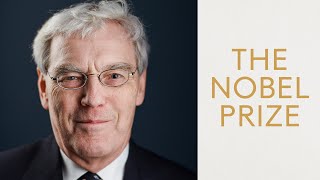
Richard Henderson, PhD
“We think that in the future, cryo-electron microscopy will be able to contribute to structures of molecules that are intractable to other methods, like x-ray crystallography, and give you a structure based drug design, to improve drugs.”
Richard Henderson is a biophysicist and molecular biologist who was the first to successfully produce a three-dimensional image of a biological molecule at atomic resolution using a technique known as cryo-electron microscopy. Henderson’s refinement of imaging methods for cryo-electron microscopy, in which biomolecules are frozen in such a way that allows them to retain their natural shape and are then visualized with a high-resolution microscope, enabled researchers to capture images of numerous biomolecular structures that previously could not be imaged by other means. He was awarded the 2017 Nobel Prize in Chemistry (shared with biophysicists Jacques Dubochet and Joachim Frank) for his work.
In addition to the Nobel Prize, Henderson received numerous other awards and honors during his career. He was an elected fellow of the Royal Society (1983), a foreign associate of the U.S. National Academy of Sciences (1998,) and a fellow of the Academy of Medical Sciences, London (1998). He was a recipient of the Rosenstiel Award for Distinguished Work in Basic Medical Research (1991) and the Copley Medal of the Royal Society (2016).






